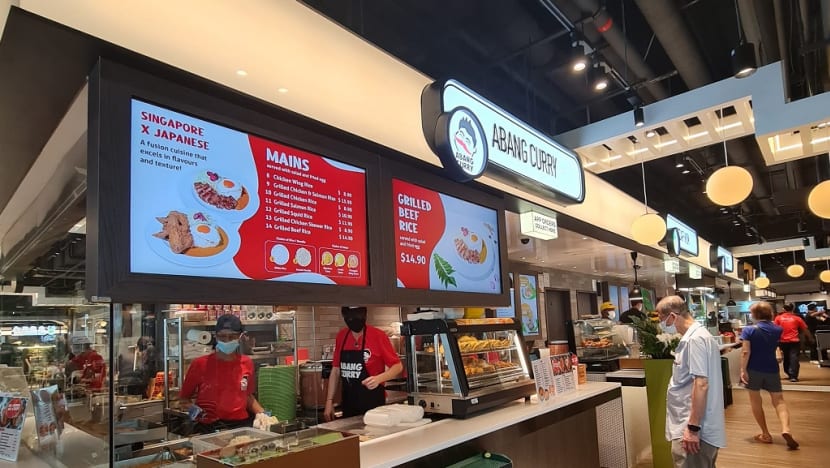Commentary: Kopitiam’s transition to a fully digital loyalty programme – timely or unnecessary?
FairPrice Group’s decision to phase out Kopitiam physical cards after Jun 30 has sparked a debate between digitalisation and the alienation of those who are less tech-savvy. NUS Business School’s Samer Elhajjar weighs in.

After the Kopitiam cards are discontinued, diners may receive the same 10 per cent discount via the FairPrice mobile application. (File photo: TODAY)
SINGAPORE: Food court chain operator Kopitiam announced last week that it will be discontinuing its physical stored-value card after Jun 30 this year. The decision has been met with both excitement and disappointment from customers, starting a debate between digitalisation and the alienation of those who are less tech-savvy.
For years, customers - both young and old - used the cards to pay for meals at Kopitiam outlets, receiving a 10 per cent discount for every purchase made. If the value in the cards ran out, customers topped them up at machines at the food courts.
After Jun 30, they will no longer be able to use the physical cards. To continue enjoying the discount, they will have to switch to the FairPrice mobile application. App users will also be able to earn and redeem Linkpoints to offset their meals.
Perhaps in a bid to help seniors who are not familiar with apps, FairPrice has said that the elderly can flash their physical Pioneer Generation or Merdeka Generation identifier cards to get the discount. All under the ComCare scheme can also benefit from the same arrangement.
With Kopitiam’s transition to a fully digital loyalty programme, is this the end of the physical loyalty card?

THE CAUSE FOR DITCHING PHYSICAL CARDS
The move towards digitalisation is a response to the changing behaviour of customers, who are becoming increasingly reliant on mobile and online solutions for their daily transactions.
By directing customers to the app, FairPrice and Kopitiam can streamline its loyalty programme.
Digital loyalty cards are convenient for many Singaporeans. They can be easily accessed through an app or website, and there's no need to carry a physical card around. No more bulky, unsightly wallets!
Consumers can also easily keep track of their rewards and points on their digital cards, which they may not have been able to do with physical ones. They may also enjoy a more personalised experience, such as product recommendations, based on their purchasing habits.
Digital cards are also more eco-friendly. Physical loyalty cards often end up in landfills, whereas digital cards incur no physical waste.
Firms can also save on the printing and distribution fees for physical loyalty cards, especially for organisations with a large userbase like Kopitiam, which has more than 100 outlets of hawker centres and food courts across the island.
The cost savings can be reinvested into other aspects of their operations. With digital loyalty programmes, firms would need to incur maintenance or cybersecurity fees for the app or website, but they also get access to valuable customer consumption data.
WHY SOME FAVOUR PHYSICAL OVER DIGITAL
Despite the benefits of the digital loyalty programme, some customers still want their physical cards.
Many customers prefer the tangible aspect of the physical card and the traditional way to redeem rewards. The act of carrying it provides a sense of satisfaction. Digital loyalty programmes do not provide the same tactile experience.
Moreover, physical cards do not require you to own a smartphone or have access to an Internet connection, making them more accessible to those who may not have access to these resources.
Think of the time when you wanted to pay with an app but your battery ran out or a technical glitch failed you - this is when the physical card would be a good backup.
Other consumers are worried about the security of their personal information and the potential for fraud with a digital system. To address these concerns, Kopitiam has stated that the digital loyalty programme will be secure and that customers’ personal information will be protected.
The company has also reassured customers that they will still be able to enjoy the same rewards and discounts as before and that the process of redeeming rewards will be simplified and more convenient.
MOVING THE NEEDLE TOWARDS DIGITAL ADOPTION
In marketing new digital features, firms have to consider customers’ sentiment. People who spent years using physical loyalty cards will take time to get used to the new way of digital cards. Many elders may be sceptical of digital technology, and may not fully understand how it works.
Even if they are tech-savvy, many elders may still prefer the traditional, tangible nature of physical documents. More specifically, the preference for the physical among the elder generation is a common phenomenon with roots in both familiarity and trust.
Getting the elderly generation to adopt digital technologies can be a challenge, but it is possible with the right approach. The app needs to be user-friendly with a simple and intuitive interface. Firms also need to provide step-by-step instructions on how to use the digital card, and be available for any questions or concerns customers may have.
For those who are still resistant, firms such as Kopitiam must address concerns, such as those relating to cybersecurity and ease of use. This can be done through publicity videos, ambassadors or store assistants. By openly discussing these issues and providing solutions, the firms can help consumers feel more comfortable and confident with the digital loyalty programme.
Finally, many consumers feel overwhelmed with digital solutions and mobile applications due to information overload, excessive notifications, and the pressure to stay connected.
With many brands now having their own individual apps, our phones are cluttered with multiple little icons across multiple screens.
The constant availability of digital solutions and mobile apps has led to many consumers overusing these technologies. This can lead to feelings of tiredness, boredom, and burnout as consumers struggle to keep up with the constant flow of information and stimulation.
Firms moving to digital loyalty programmes need to consider all this. In business and marketing, it is not all about what you want to promote to the customer, but what the customer needs. Make the digital switch easy for them, and even the least tech-savvy customer can be won over.
While the physical cards are still in use, their era as the flagship marketing tactic will come to an end sooner or later. With the rise of mobile technology and digital wallets, many customers will be using digital loyalty programmes and reward systems instead of traditional physical cards.
Samer Elhajjar is Senior Lecturer, Department of Marketing, National University of Singapore Business School. The opinions expressed are those of the writer and do not represent the views and opinions of NUS.




















